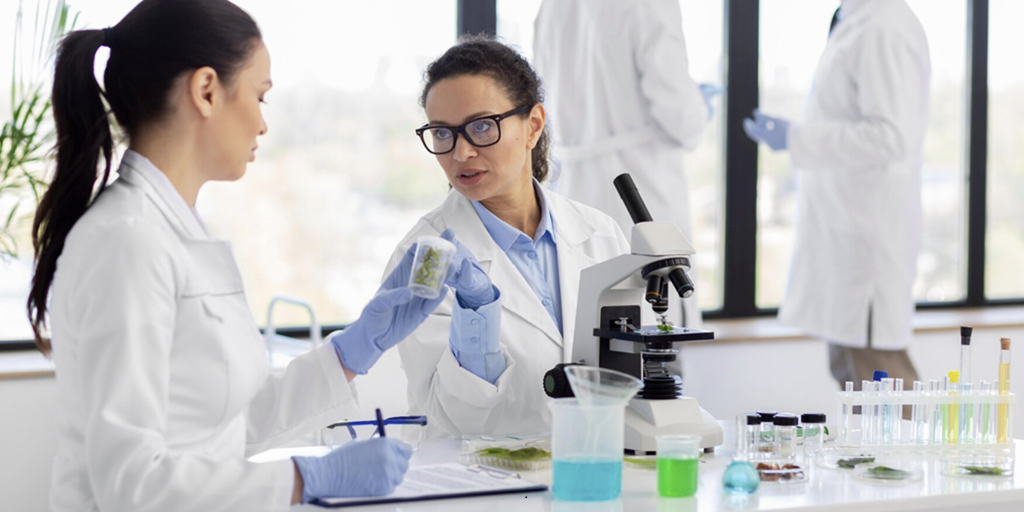What is Antimicrobial Resistance?
Antimicrobial resistance happens when microorganisms (such as bacteria, fungi, viruses, and parasites) change when they are exposed to antimicrobial drugs (such as antibiotics, antifungals, antivirals, antimalarials, and anthelmintics).
This change happens through a series of antimicrobial drug medications. For example, when a person is sick and he or she consumes antibiotics, the bacteria causing the sickness is killed off. However, some of the pathogenic bacteria survive and eventually develop a resistance to the said antibiotic.
The drug-resistant genes pass on to their daughter cells as they multiply, eventually rendering the current medication ineffective. Doctors would need to prescribe a stronger dose of antimicrobial drugs, which will cause more microbial species to develop resistance.
Microorganisms that develop antimicrobial resistance are sometimes referred to as “superbugs”.
So, What’s the Big Deal?
Recent data indicates that there’s an emergence of new resistance mechanisms and it’s spreading globally. This threatens our ability to treat even the most common infectious diseases, resulting in various implications such as prolonged illness, disability, and even death.
“Many of the medical breakthroughs of the last century could be lost through the spread of antimicrobial resistance. Previously curable infectious diseases may become untreatable and spread throughout the world. This has already started to happen.” -WHO
For example, data from 77 countries show that antibiotic resistance is making gonorrhea – a common sexually-transmitted infection – much harder, and sometimes impossible, to treat. Gonorrhea can cause severe implications in the long run such as sepsis.
Without effective antimicrobials for prevention and treatment of infections, medical procedures such as organ transplantation, cancer chemotherapy, diabetes management and major surgery (for example, caesarean sections or hip replacements) become very high risk.
Antimicrobial resistance increases the cost of health care with lengthier stays in hospitals and more intensive care required.

AMR is a Clear & Present Threat in Global Healthcare
Currently, AMR accounts for an estimated 700,000 deaths per year globally. The same report states that the death toll will increase by up to 10 million per year globally by 2050. This is higher than the annual death toll for cancer today.
The economic burden of AMR is also becoming apparent and can hurt GDPs globally. The associated cost of AMR to the global economy is estimated, by one study, to increase to USD 100 trillion by 2050.
In one example, drug-resistant tuberculosis (TB) is the most common and lethal airborne AMR disease worldwide today, responsible for 230,000 deaths each year. In 2016, 490,000 people developed multi-drug resistant TB globally.
Here’s something else to think about: over the past 70 years, only two new antibiotics for treatment of multidrug-resistant (MDR) TB have reached the market. Investments in research and development (R&D) of TB medication is seriously underfunded and is at its lowest level since 2008.
There is a limited number of second-line medicines to treat MDR-TB and only 52% of patients are successfully treated globally.
Further compounding the issue of AMR is that it’s starting to complicate the fight against HIV and malaria, as well.

Causes of Drug Resistance
To understand the origins of AMR, we must look back into our history of diseases and illnesses as well as the development of treatment and medications.
- Evolution – over time as humans find a way to treat diseases and illnesses, the more susceptible microorganisms succumb, leaving behind the stronger, more resistant microorganisms. These stronger microorganisms pass on their resistance to their offspring, and their human host passes along the microbiome to their children as well.
- Inappropriate use of medicine – Overuse, underuse and misuse of medicines contribute to AMR as well. For example, dispensing antibiotics even for a simple fever is detrimental, as it would only promote the development of antibiotic-resistant bacteria within a person.
- Lack of quality medicines – Most drug quality assurance systems are weak, with hospitals and clinics looking to cut costs and increasing profit, they turn to substandard medicines. Various factors like sub-optimal concentrations of active ingredients, impurities, etc. promote more drug resistance.
- Animal husbandry is a source of resistance – Sub-therapeutic doses of antibiotics are often used in farm animals for promoting growth or preventing diseases. This results in resistant microorganisms to emerge, which then spread to humans when in contact, or when consumed.
- Poor infection prevention & control – This further amplifies the spread of drug-resistant infections. For example, vaccinations have proven to be effective in preventing bacterial and viral infections but lacks coverage in rural communities. Also, hospitalized patients can easily spread resistant microorganisms.
- Weak AMR surveillance in certain countries – While developed countries have lab facilities to identify and report resistant microorganisms, some countries lack the resources. This impairs the ability to detect and monitor the emergence of resistance (i.e., to take prompt actions).
Naturally, any life on earth would evolve to develop a form of resistance to survive. For example, antimicrobial resistance is a natural process in bacteria; irresponsible use of antibiotics makes it worse as it accelerates the process. AMR compounds further when the infection caused by resistant microbes becomes contagious.
How to Combat AMR?
Combatting the onslaught AMR requires planning, execution and cooperation of many parties; from governments to healthcare professionals and pharmacists, as well as food production and ourselves in general (the consumers).
From controlling how antimicrobials (predominantly antibiotics) are distributed to promoting a healthy lifestyle, here are ways on how we can combat AMR:
1. Control the prescription of antibiotics.
- Hospitals, clinics and pharmacists should be careful and responsible when prescribing antibiotics to their patients. Ensure that the correct dosage is prescribed only when necessary.
- Patients, on the other hand, should consult with their healthcare provider if antibiotic treatment is beneficial to their illness.
- Patients should also be aware that antibiotics are only meant for bacterial infections (click here to know more on antibiotics). They are ineffective against viral infections such as cold, flu, coughs (and bronchitis), throat and ear infections. Other more complicated viral infections include sexually transmitted diseases (STDs), hepatitis, etc.
- Read more on advanced antibiotics against complicated infections.
2. Promote lifestyle for a healthy microbiome.
- A healthy microbiome will no longer be an added benefit, it may be essential if not a critical factor in keeping us healthy and helping us fight drug-resistant diseases.
- The human microbiota contains good bacteria as well as some opportunistic pathogens, but they all play crucial roles in human health and disease. To maintain a balanced and healthy microbiome, we should develop healthy habits like eating more fruits and vegetables, consuming probiotics and prebiotics, exercising regularly, manage stress, getting enough sleep, etc.
- Read more on how you can boost your gut health.
- Food companies can help greatly by producing and distributing more probiotics and prebiotics. Probiotics are foods rich in good bacteria such as yoghurt, miso, kimchi, tempe, etc. Prebiotics are foods that your microbiome will consume and thrive on.
- An example of a microbiome-based treatment is fecal microbiota transplant (FMT) or stool transplant. It has gained increasing prominence over recent years. FMT is the transplantation of fecal bacteria from a healthy individual into a recipient patient. The result of which the patient’s microbiome will benefit from the healthy donor’s microbial sample, increasing the patient’s ability to fight diseases.

3. Increase the coverage of vaccines.
- Throughout history, vaccines are well established as a tool for preventing infections. and reducing antibiotic use. This includes the smallpox vaccine (developed 1798) that eradicated smallpox by 1979.
- By the 1960s, most children in developed countries were routinely vaccinated, with 103 million cases of infectious disease prevented since 1924 in the US alone.
- Resistance is a predictable outcome of antibiotic use, but resistance to vaccines is an extremely rare event. Vaccines work in a ‘preventive’ manner that restricts the pathogen’s ability to establish a foothold in the host. This confers immunity before infection.
- Vaccines are not known to have a significant impact on the microbiome, while broad-spectrum antibiotics may disrupt the microbiome. Prolonged treatment with antibiotics causes ‘dysbiosis’ in patients, a state where the microbiome becomes imbalanced. This leads to various health problems from diarrhea to a weak immune system.
- Vaccines ultimately reduce antibiotic use due to fewer infections. Indirectly, vaccines reduce the risk of AMR developing.
4. Spread the awareness on AMR
- The most important part of combating AMR is to spread awareness to the general population, particularly densely populated communities and those living near livestock (where pathogens can easily spread among humans).
- Local governments should communicate with the public on the rising threat and prevention of AMR. They can enact programmes targeting different audiences in human health, animal health and agricultural practices as well as consumers.
- Health ministries in cooperation with education ministries should include the proper use of antimicrobial agents and resistance in school curricula and professional education.
Antimicrobial resistance is an ever-increasing threat in healthcare. While the process of microorganisms developing certain resistance to survive is a natural process, the irresponsible dispensation of antimicrobial drugs would accelerate the process unnecessarily. It is only a matter of time until the general human population is unable to cope with the increasingly resistant microbes.
Steps should be taken to reduce our dependence on antimicrobial drugs, especially antibiotics. Governments and healthcare sectors should explore options that were previously overlooked, such as increasing the coverage of vaccines in rural areas and tapping into the potential of the human microbiome.
Sources:
- https://www.who.int/en/news-room/fact-sheets/detail/antimicrobial-resistance
- https://www.who.int/antimicrobial-resistance/en/
- https://www.ijidonline.com/article/S1201-9712(19)30397-2/pdf
- https://www.pnas.org/content/115/51/12902
- https://www.ncbi.nlm.nih.gov/pmc/articles/PMC5992407/
- https://www.ncbi.nlm.nih.gov/pmc/articles/PMC6479322/
- https://www.ncbi.nlm.nih.gov/pmc/articles/PMC6671974/
- https://www.rxlist.com/antibiotic_resistance/drugs-condition.htm




